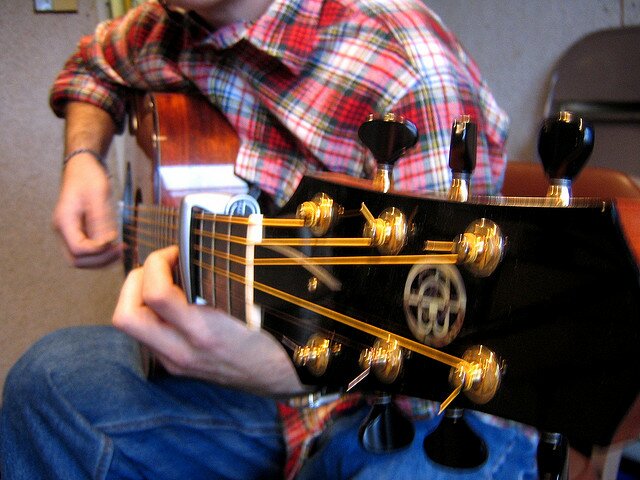
This lesson we will take a look at how to create phrases and melodies with the major scale positions that we learnt in the previous lesson. You should approach using these scales in the same way as the pentatonic scales and the blues scales etc. The only difference here is that there are more notes involved, which may seem daunting at first, but the extra notes give you the opportunity to make your improvising more interesting than if you were just using the five notes of a pentatonic scale.
To start you off, try learning the suggested phrases below. These should give you an idea of what can be achieved with the major scale. Once you have had a go at these you should try to come up with some on your own. Also, you could approach the phrases below from a different angle and end up with a completely different sounding phrase. The possibilities are endless so try and come up with as many as possible, just let your ears be the judge of what’s hot and what’s not!
Taken from position one:

Taken from position two:

Taken from position three:

Taken from position three:

Taken from position four:

Taken from position six:

The following phrases show you what can be done by linking up more than one position to create a run of notes. Because these scales cover such a large amount of the neck, the possibilities of the runs you can play are huge. So, once you have learnt these try expanding them into your own ideas and also trying brand new ones for yourself.
RELATED One Octave Pentatonic Major Scales
Taken from positions one, two, three and four:

Taken from positions two and three:

Taken from positions one, two, three and four:

Taken from positions four, five, six and seven:

When coming up with runs for yourself, try running up or down the scale in thirds. This can sound really good when used appropriately with the rhythm you are following. It involves jumping down three notes at a time instead of one, then stepping down to the next note and doing the same. The same technique can be used to great effect when ascending or descending a scale. Follow the TAB and video examples below to see how to do this:
Descending in 3rds:

Ascending in 3rds:

By now you should be starting to get to grips with how to play the major scale in the key of G major. Obviously, in order to improvise effectively you need to be able to transpose these scale positions into other keys. You should remember from the other scales we have learnt that this means matching up the root notes in the positions with the required root notes on the neck of the guitar. The same applies with this scale.For example, if you wanted to play these positions in the key of A major; the first position would start from the 5th fret; the second from the 7th fret; the third from the 9th fret and so on.

image credit – CTD 2005



